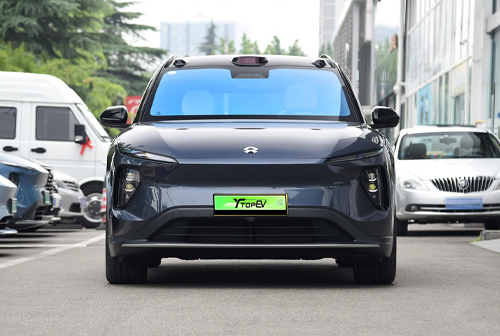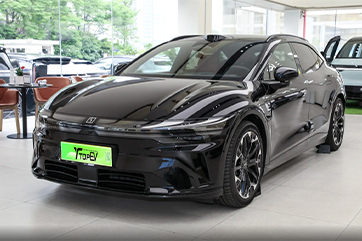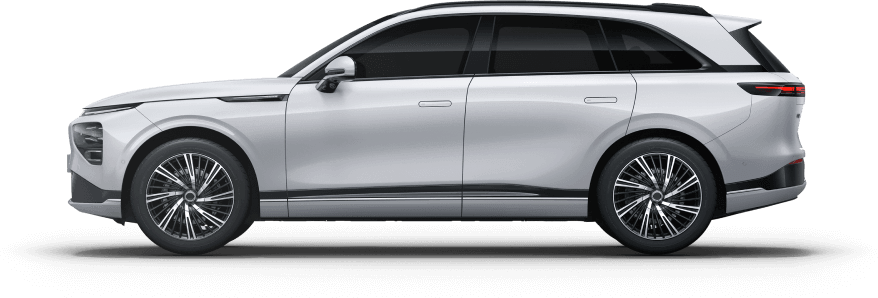Today, vehicle updates are happening at an increasingly rapid pace, especially with the Chinese government actively promoting the development of new energy vehicles. A wide range of incentive policies have accelerated consumers' car replacement frequency, leading to rapid growth in the used car market. China’s used car market is characterized by a large inventory and affordable prices, making it an attractive choice for many buyers. For those with limited budgets, a used car with low mileage, no major issues, and high cost-performance is often a great option.
However, the vast number of vehicles and inconsistent quality, combined with legal and tax complexities during transactions, make buying and selling a challenge with many potential pitfalls. As a result, the used car market is often seen as unreliable or “luck-based,” especially when it comes to importing used vehicles.
To help you navigate this, we’re sharing practical tips and key reminders for purchasing used cars from Chinese ports — providing valuable insights for your buying journey.
.jpg)
4 Reasons to Import a Car from China:
Before diving into the detailed process, let’s first explore why more and more consumers and dealers are choosing to import cars from China. Here are four key advantages:
1. Extremely Competitive Prices
Chinese cars are known for their excellent value. Prices are typically 20%–30% lower than comparable models from Europe or the U.S. For instance, a Toyota Corolla may cost around $13,000, while you can easily find similar configurations from BYD, AION, or Geely for under $9,000 — significantly reducing purchase costs.
.jpg)
In addition, our company provides used car offers on select models, and consultations are free. Feel free to contact us!
2. Proven Technology and Reliable Quality
Although Chinese cars once faced skepticism regarding reliability, this perception is rapidly changing. Brands such as BYD, Zeekr, Xiaomi, AITO, and Lixiang have earned global recognition thanks to advanced manufacturing processes and intelligent technologies. Their growing sales and strong customer feedback—along with numerous international awards—prove that Chinese car quality now meets global standards.
3. Industry-Leading Range and Charging Technology
Chinese automakers are leading the way in EV technology, especially in driving range and fast-charging capabilities. In April, BYD introduced the Han L and Tang L models equipped with megawatt-level fast-charging tech — claiming charging speeds comparable to gasoline refueling. This greatly eases range anxiety and charging delays.
More importantly, despite technological breakthroughs, prices remain stable. With high cost-effectiveness and advanced innovation, Chinese EVs are now overtaking global competitors. Whether importing a new vehicle or choosing a used car export, China remains the most cost-efficient option.
4. Streamlined Import Process and Favorable Policies
Although importing vehicles from China may seem complicated, in reality, China is one of the most convenient countries for automobile exports. As an export-driven economy, China prioritizes efficiency and service in its global trade. From policy support to logistics infrastructure, the process is often more streamlined and cost-effective than importing from Western countries.
In short, whether you're focused on price, quality, technology, or logistics, Chinese vehicles offer a compelling combination of advantages and are a trustworthy source for imports.
How to Import a Car from China in 8 Simple Steps:
Importing from China is not as complicated as it seems. Follow these 8 steps to bring home the vehicle you want:
1. Find a Trusted Car Supplier
The first step is finding a trustworthy car supplier. Before committing, conduct thorough market research and verify the company’s reputation and credentials. Once a reliable partner is identified, the import cars process becomes much smoother.
.jpg)
TOPEV is a dependable used auto sale partner in China. We can serve as your local supplier and handle all the heavy lifting. If you're planning a used car export, contact our sales team — we’ll take care of everything for you.
2. Choose a Vehicle and Negotiate the Price
Next, choose a car that fits your needs. If the price is high, you can negotiate. Be sure to check the mileage, damage history, part replacements, original paint status, and whether the car is allowed to be imported into your country.
.jpg)
At TOPEV, we handle used vehicle check with strict standards. We provide free official inspection reports, guaranteeing the accuracy of vehicle specifications and information. Our one-stop service removes the guesswork from the process.
3. Complete Registration, Inspection, and Compliance
Before leaving China, the vehicle must undergo local registration, quality inspection, and compliance certification to ensure it meets necessary standards and protects your rights as a buyer.
4. Obtain Import Permits and Customs Documents
Before starting the import process, you must apply for an import license and prepare the required customs documents, including:
- Bill of Lading
- Commercial Invoice
- Certificate of Origin
- Import License
These can be processed by yourself or through a professional import service agency.
5. Understand All Associated Costs
Importing a car involves various expenses. It's recommended to request a quote from your supplier and be aware of the following cost items:
-
Vehicle invoice price
-
VAT or GST
-
Modification costs (to meet local standards)
-
Export service fees (within China)
-
Shipping and insurance
-
Customs, storage, and delivery fees in the destination country
-
Registration and insurance costs
6. Choose the Right Logistics Partner
Logistics is crucial to ensure your vehicle arrives safely and on time. Choose an experienced and reputable logistics partner and finalize details like:
-
Shipping method (RoRo, FCL, or shared container)
-
Port of origin and destination
-
Transit time
-
Total cost
.jpg)
7. Customs Clearance and Import Duties
After the vehicle arrives at your local port, it must go through customs clearance. Authorities will verify the documents and calculate applicable import duties and taxes. The vehicle will also undergo compliance testing and a general inspection to ensure it’s not stolen and meets road safety standards.
8. Register the Vehicle Locally
Once the car is cleared by customs, it must be registered in your country. Although procedures vary by region, typical steps include:
-
Submitting documents
-
Passing a safety inspection
-
Meeting emissions standards
-
Purchasing insurance
-
Paying registration and road taxes
Some countries restrict imports by vehicle type or age. Be sure to confirm your local policies to avoid issues later.

.jpg)
.jpg)
.jpg)
.jpg)
.jpg)
.jpg)
.jpg)


.jpg)
.jpg)
.jpg)





